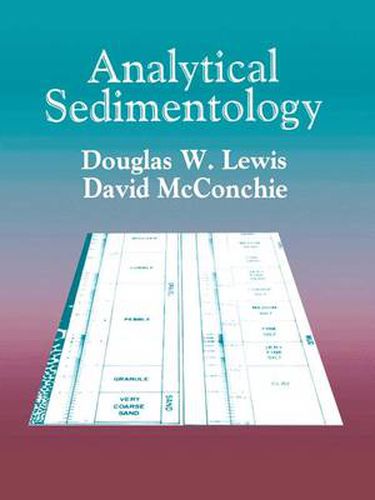Readings Newsletter
Become a Readings Member to make your shopping experience even easier.
Sign in or sign up for free!
You’re not far away from qualifying for FREE standard shipping within Australia
You’ve qualified for FREE standard shipping within Australia
The cart is loading…






Useful as both a self-instruction manual and a guide to the analysis of sediments in both the field and the laboratory, this book provides cookbook recipes for common analytical procedures dealing with sediments. It also serves as an introduction to the principles and reference sources for procedures that generally would be performed by specialist consultants or commercial laboratories. Using a minimum of mathematics and virtually no theory, the book introduces practicioners to easy, inexpensive options for sample collection and preparation, data acquisition, analytical protocols, result interpretation and verification techniques. This step-by-step guide considers the advantages and limitations of different procedures, discusses safety and troubleshooting, and explains the importance of such support skills as mapping, photography and report writing. The scope of this book ranges from fieldwork through laboratory analytical procedures to downhole geological techniques. This book should be of interest to those involved in environmental science; forestry; fisheries; coastal management; hydrology; resource management; soil and water remediation; waste disposal; and construction engineering.
$9.00 standard shipping within Australia
FREE standard shipping within Australia for orders over $100.00
Express & International shipping calculated at checkout
Useful as both a self-instruction manual and a guide to the analysis of sediments in both the field and the laboratory, this book provides cookbook recipes for common analytical procedures dealing with sediments. It also serves as an introduction to the principles and reference sources for procedures that generally would be performed by specialist consultants or commercial laboratories. Using a minimum of mathematics and virtually no theory, the book introduces practicioners to easy, inexpensive options for sample collection and preparation, data acquisition, analytical protocols, result interpretation and verification techniques. This step-by-step guide considers the advantages and limitations of different procedures, discusses safety and troubleshooting, and explains the importance of such support skills as mapping, photography and report writing. The scope of this book ranges from fieldwork through laboratory analytical procedures to downhole geological techniques. This book should be of interest to those involved in environmental science; forestry; fisheries; coastal management; hydrology; resource management; soil and water remediation; waste disposal; and construction engineering.